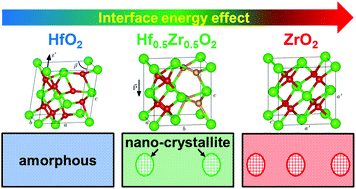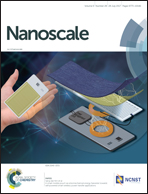Surface and grain boundary energy as the key enabler of ferroelectricity in nanoscale hafnia-zirconia: a comparison of model and experiment†
Abstract
The unexpected ferroelectric properties of nanoscale hafnia-zirconia are considered to be promising for a wealth of applications including ferroelectric memory, field effect transistors, and energy-related applications. However, the reason why the unexpected ferroelectric Pca21 phase can be stabilized has not been clearly understood although numerous extensive theoretical and experimental results have been reported recently. The ferroelectric orthorhombic phase is not a stable phase under processing conditions from the viewpoint of bulk free energy. Although the possibility of stabilization of the ferroelectric phase due to the surface energy effect has been theoretically suggested, such a theoretical model has not been systematically compared with actual experimental results. In this study, the experimental observations on polymorphism in nanoscale HfO2–ZrO2 solid solution thin films of a wide range of film compositions and thicknesses are comprehensively related to the theoretical predictions based on a thermodynamic surface energy model. The theoretical model can semi-quantitatively explain the experimental results on the phase-evolution, but there were non-negligible discrepancies between the two results. To understand these discrepancies, various factors such as the film stress, the role of a TiN capping layer, and the kinetics of crystallization are systematically studied. This work also reports on the evolution of electrical properties of the film, i.e. dielectric, ferroelectric, anti-ferroelectric, and morphotropic phase changes, as a function of the film composition and thickness. The in-depth analyses of the phase change are expected to provide an important guideline for subsequent studies.



 Please wait while we load your content...
Please wait while we load your content...